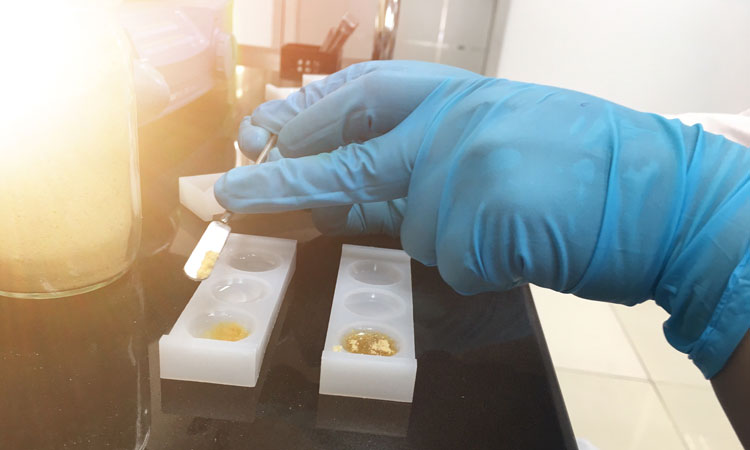What can sensitivity give you other than lower LOQs in food and cannabis testing?
- Like
- Digg
- Del
- Tumblr
- VKontakte
- Buffer
- Love This
- Odnoklassniki
- Meneame
- Blogger
- Amazon
- Yahoo Mail
- Gmail
- AOL
- Newsvine
- HackerNews
- Evernote
- MySpace
- Mail.ru
- Viadeo
- Line
- Comments
- Yummly
- SMS
- Viber
- Telegram
- Subscribe
- Skype
- Facebook Messenger
- Kakao
- LiveJournal
- Yammer
- Edgar
- Fintel
- Mix
- Instapaper
- Copy Link
Posted: 28 June 2021 | Sciex | No comments yet
Following an insightful live webinar on the benefits of a highly sensitive mass spectrometer, Robert Di Lorenzo takes the opportunity to answer several audience questions…


A highly sensitive mass spectrometer offers you more than just enhanced limits of quantification (LOQ). In a recent New Food webinar, Robert Di Lorenzo of SCIEX discussed the various advantages of next-level sensitivity with multiple contaminant-testing case studies. Here are the highlights from the live Q&A session that followed.
How much work is needed to transfer my methods from the Triple Quad™ SCIEX 6500+ LC-MS/MS System or from other SCIEX instruments to the SCIEX Triple Quad™ 7500 LC-MS/MS System – QTRAP® Ready?
Method transfer between SCIEX nomimal mass instruments is very straightforward owing to a few reasons. Firstly, the LINAC® Collision Cell hasn’t changed, which means collision energy (CE) and collision cell exit potential (CXP) voltages can be directly transferred.
Secondly, de-clustering potential (DP) no longer affects signal intensity on the SCIEX 7500 System and therefore no longer needs to be set. Finally, a method converter is built into SCIEX, so any methods created with Analyst® Software can be directly imported without having to transfer values manually. The only thing that needs to be re-optimised are the source settings, which we recommend whenever transferring methods to any new system, not just the SCIEX 7500 System.
Is Q0 dissociation (Q0D) the same as de-clustering potential (DP)? Do I need to optimise it for each compound?
Q0D behaves similarly to DP but is applied to a lens further down the ion path, rather than at the sampling orifice. There is no need to optimise Q0D for each compound, as the default value will yield the most intense signal. The only instance in which Q0D needs to be changed is if you intentionally try to induce fragmentation ahead of Q1.
The optimised IonSpray™ Ion Source voltages seem low. Why does it optimise at such a low voltage?
The OptiFlow® Pro Ion Source on the SCIEX 7500 System optimises at a lower IonSpray Source voltage than previous models due to the introduction of E Lens™ Technology. Here, the same voltage is applied to the tip of the E Lens that is applied to the ESI probe. With voltage now being applied at two points within the source, the electric field strength is enhanced compared to previous designs, so ionisation is induced at a lower absolute voltage.
Is there a gain in relative sensitivity as you dilute the sample or inject less? That is, does a 10x dilution ever result in a <10x reduction in signal?
This is often the case when measuring matrix samples! Matrix effects come in the form of ionisation suppression; by further diluting samples or lowering injection volumes, matrix effects can be minimised. As a result, the overall signal is less affected than anticipated by the additional dilution or lowered injection.
Do you see different matrix effects with the newly designed OptiFlow Pro Ion Source?
Internal work by SCIEX R&D has shown no difference in matrix effects with the OptiFlow Pro Ion Source compared to previous models with the same matrix loading (ie, the IonDrive™ Turbo V Ion Source). However, the additional sensitivity afforded by the design of the 7500 System allows for larger dilutions and fewer matrix loadings for more robust and consistent analysis.
With regard to dilution and saturation, is it more complicated to use the SCIEX 7500 System compared to other SCIEX instruments?
Despite the SCIEX 7500 System being the most advanced SCIEX Triple Quad System, it’s the easiest to use with the OptiFlow Pro Source; no physical optimisation is required. In addition, although it is the most sensitive instrument offered by SCIEX, it still maintains six orders of linear dynamic range to minimise the need for rerunning samples that have fallen outside the calibration range.
Interested to find out more? Click here to watch the webinar on-demand today.









